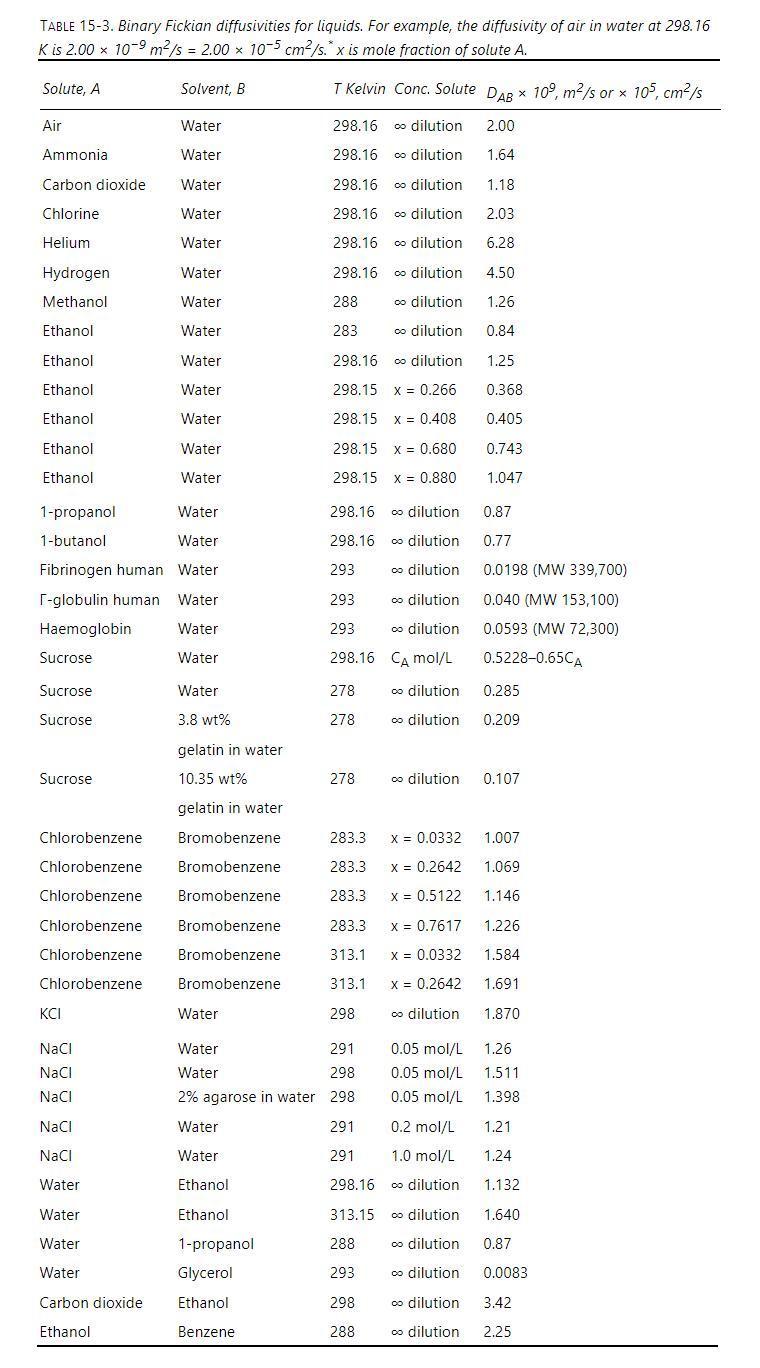Water at (20^{circ} mathrm{C}) is flowing down a (3.0 mathrm{~m}) long vertical plate at a volumetric flow
Question:
Water at \(20^{\circ} \mathrm{C}\) is flowing down a \(3.0 \mathrm{~m}\) long vertical plate at a volumetric flow rate per meter of plate width of \(q=0.000005 \mathrm{~m}^{2} / \mathrm{s}\). Entering \((y=0)\) water is pure. The water is in contact with carbon dioxide gas that is saturated with water vapor at \(20^{\circ} \mathrm{C}\) (no water is evaporating). Carbon dioxide transfers into the water. At the water-gas surface \((\mathrm{z}=0)\), water and carbon dioxide are in equilibrium at the solubility limit of carbon dioxide at \(\mathrm{C}_{\mathrm{CO} 2 \text {,surf }}\). Estimate Fickian infinite dilution diffusivity by adjusting the value from Table 15-3 for the temperature difference by assuming that \(\mathrm{E}_{\mathrm{o}}=2000\) \(\mathrm{cal} / \mathrm{mol}\) in Eq. \((15-22 \mathrm{c})\). At \(20^{\circ} \mathrm{C}\), the solubility of carbon dioxide in water is \(1.7 \mathrm{~g} / \mathrm{kg}\) water.
a. Determine film thickness \(\delta\), average vertical velocity of film, and Reynolds number.
b. Is flow laminar? If no surfactant is added, do you expect ripples on the surface? If surfactant is added, do you expect ripples on the surface?
c. With no surfactant, determine average mass transfer coefficient and average Sherwood number.
d. Per meter of plate width, at what rate \((\mathrm{kg} / \mathrm{s})\) is carbon dioxide transferred into water over the length of the plate?

Equation 15-22c

Step by Step Answer:

Separation Process Engineering Includes Mass Transfer Analysis
ISBN: 9780137468041
5th Edition
Authors: Phillip Wankat





